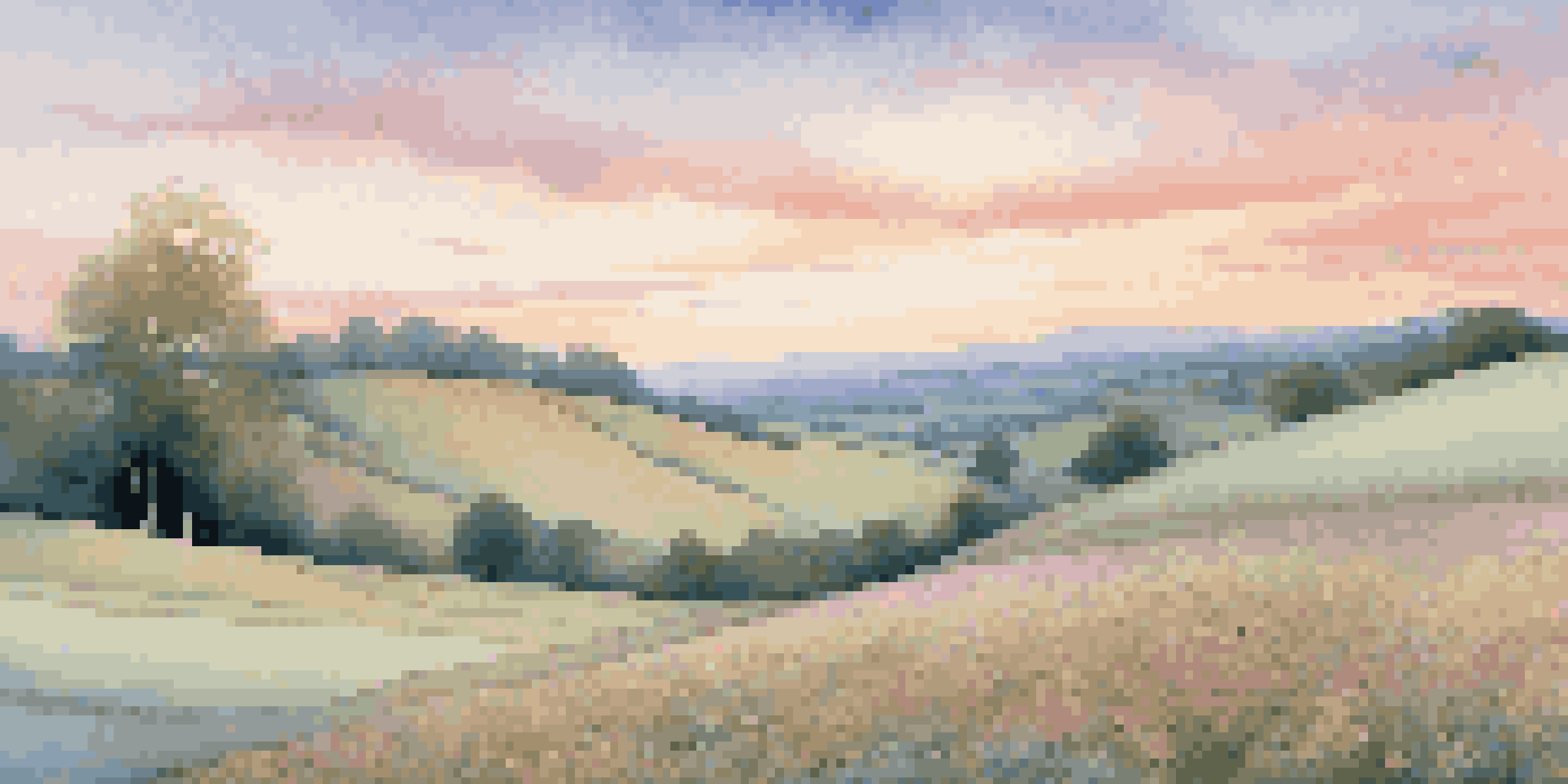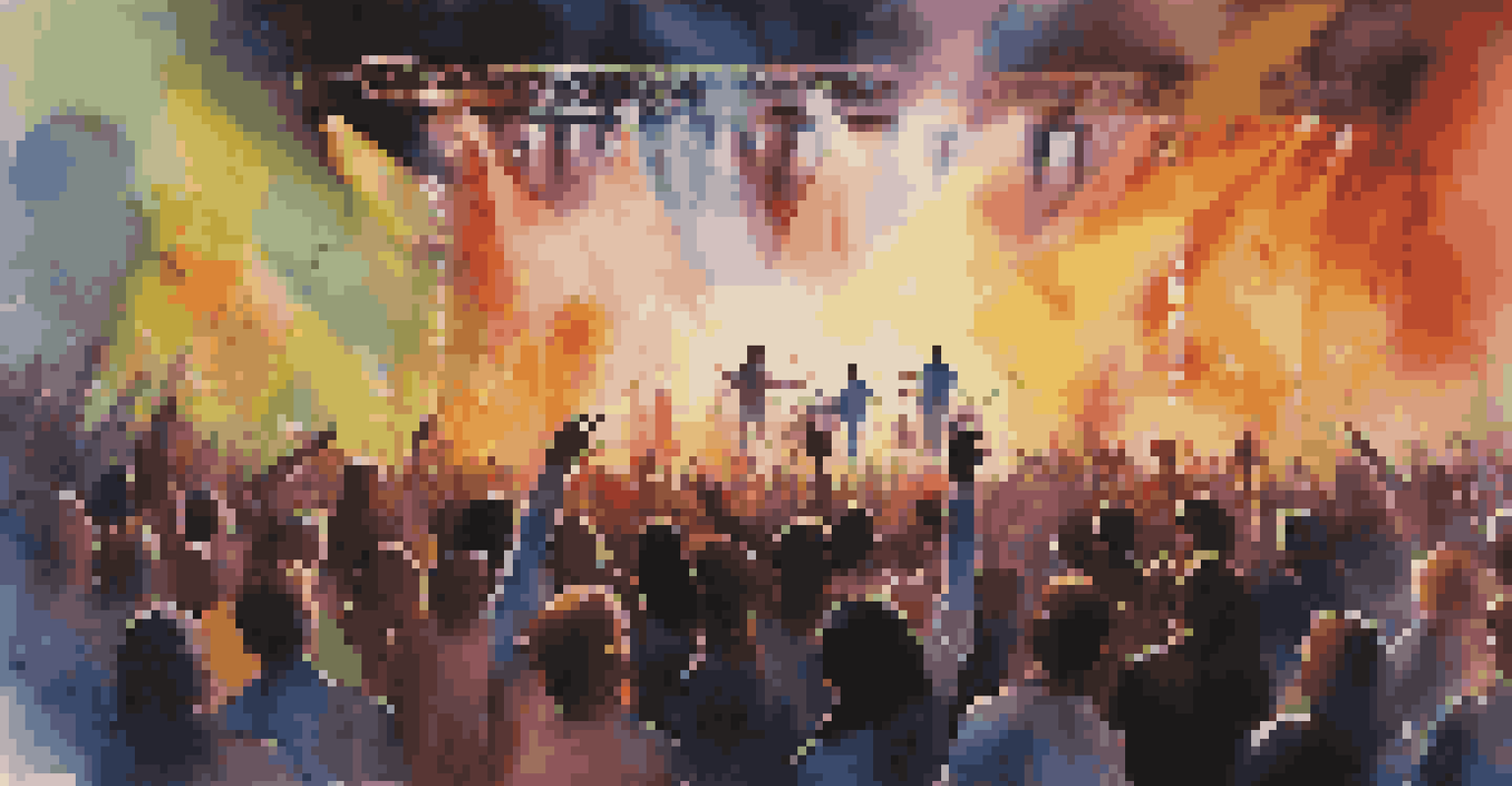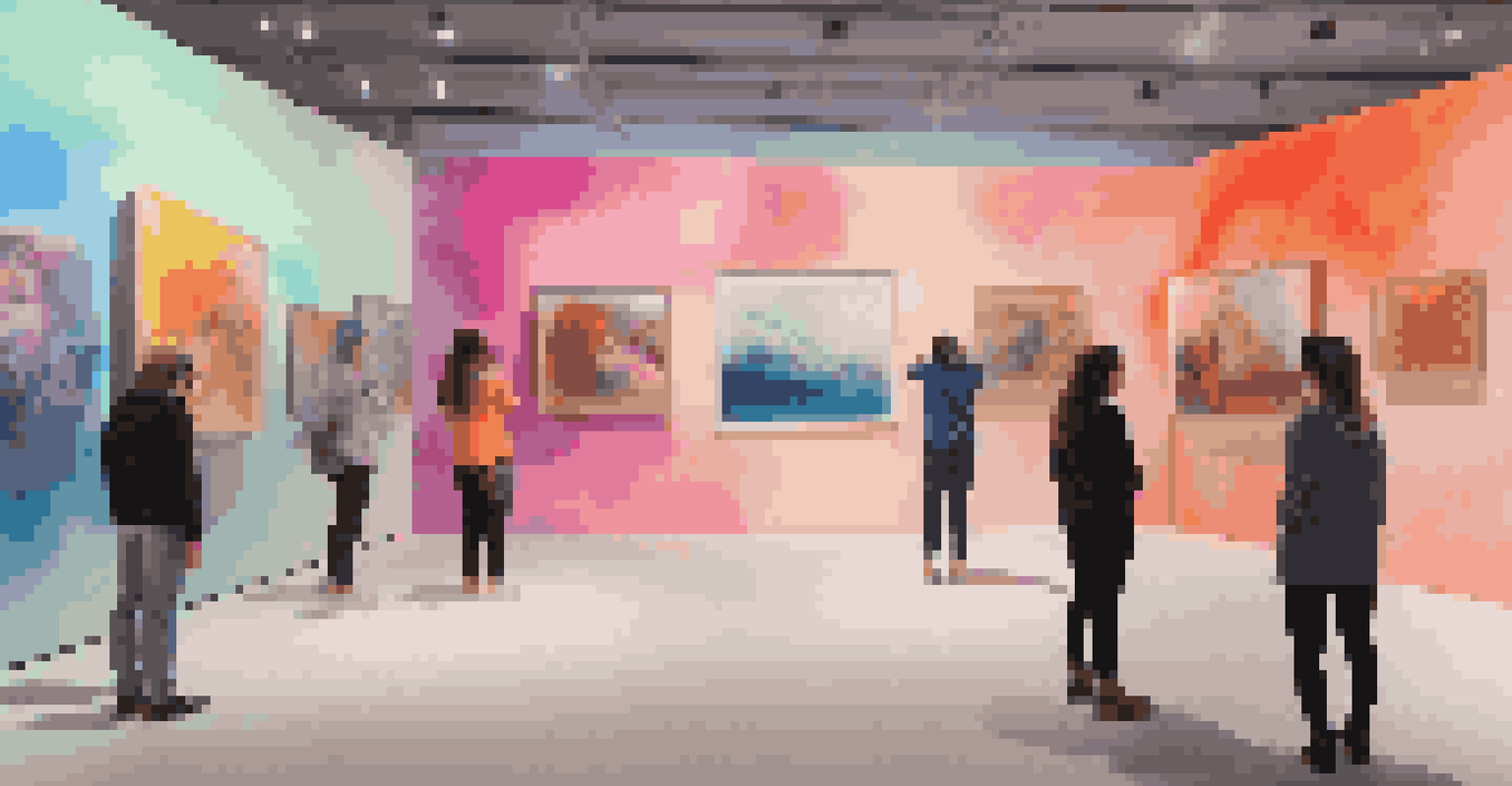The Aesthetic Experience: Music and Visual Arts Combined

Understanding the Aesthetic Experience
The aesthetic experience is a complex interaction between our senses and emotions. It often occurs when we engage with art forms, leading to a heightened awareness and appreciation of beauty. This experience can be particularly profound when two art forms, like music and visual arts, come together, amplifying our emotional response.
Art is the most beautiful of all lies.
Imagine walking into an art gallery where soft music plays in the background, setting the mood. As you gaze at the vibrant colors and intricate details of a painting, the melodies evoke feelings that complement the visual experience. This synergy creates a rich tapestry of emotions that enhances our overall appreciation of both art forms.
Ultimately, the aesthetic experience is about connection—connecting with the art, the artist's intent, and our own feelings. It allows us to step outside of ourselves and immerse in a world where creativity knows no bounds.
The Power of Music in Visual Art
Music has a unique ability to evoke emotions and memories, making it a powerful companion to visual art. When paired with visual elements, music can deepen our understanding of the artwork, providing context that may not be immediately apparent. Think about how a dramatic score can elevate a film scene, enhancing the visuals and making the experience more impactful.

For instance, consider a painting depicting a serene landscape. When accompanied by gentle acoustic melodies, the music can transport you to that scene, allowing you to feel the calm and tranquility it represents. This interplay between sound and sight creates a multi-dimensional experience that resonates on various levels.
Moreover, many artists intentionally integrate music into their creative process, allowing it to inspire their work. This connection between sound and visual expression showcases the versatility and richness of artistic creation.
Visual Arts Enhancing Musical Performances
Just as music can enhance visual art, visual elements can elevate musical performances. Think about a concert where light shows and projections complement the music. This visual spectacle can transform a simple performance into a memorable experience, engaging spectators on multiple sensory levels.
Music is the shorthand of emotion.
For example, the use of colorful lighting and abstract visuals during a live performance can create an immersive environment that captivates the audience. This synergy encourages listeners to feel more connected to the music, as the visuals reflect the emotions and themes of the songs being performed.
In this way, visual arts do not merely accompany music; they amplify its impact, creating a richer, more dynamic experience for the audience. This fusion illustrates the limitless possibilities that arise when two artistic forms collaborate.
The Role of Synesthesia in Art Appreciation
Synesthesia, a condition where one sense is simultaneously perceived as another, serves as a fascinating link between music and visual arts. Some individuals may see colors when they hear music or associate specific sounds with particular visual elements. This unique experience can deepen the aesthetic engagement with both art forms.
For instance, an artist might create a painting inspired by a particular piece of music, translating the sounds into colors and shapes. This translation offers viewers a unique perspective, allowing them to experience the music visually, enriching the overall aesthetic experience.
While synesthesia is relatively rare, it highlights the potential for overlapping sensory experiences in art. It encourages us to consider how our personal interpretations of music and visual arts can lead to a more profound appreciation of both.
Collaborative Projects: Artists Merging Mediums
Throughout history, many artists have collaborated across disciplines, merging music and visual arts to create innovative works. These collaborations often result in unique experiences that push the boundaries of traditional art forms. A prime example is the combination of dance, music, and visual projections in contemporary performance art.
Take, for instance, the works of artists like Olafur Eliasson, who integrates light and sound into his installations. His exhibitions often feature ambient music that enhances the visual experience, inviting viewers to engage with the space in a holistic manner. This collaborative approach fosters a deeper connection between the audience and the artwork.
Such projects illustrate the power of collaboration in the arts, where the combination of different mediums can lead to groundbreaking creations. By merging music and visual arts, artists can cultivate a richer aesthetic experience that transcends traditional boundaries.
Cultural Influences on Aesthetic Experiences
Cultural contexts significantly shape our aesthetic experiences with music and visual arts. Different cultures have unique artistic traditions that influence how we perceive and interpret art. For instance, the use of color, form, and sound varies widely across cultures, resulting in distinct aesthetic experiences.
Consider the vibrant colors and rhythmic patterns in African art, which often evoke a sense of community and celebration. When accompanied by traditional music, these visual elements can create a powerful emotional response that resonates deeply with individuals familiar with that cultural context.
Recognizing these cultural influences allows us to appreciate the diversity of aesthetic experiences. It reminds us that our interpretation of art is often informed by our backgrounds, enriching our understanding of both music and visual arts.
The Future of Aesthetic Experiences in Art
As technology continues to evolve, the potential for new aesthetic experiences in the realms of music and visual arts expands exponentially. Virtual reality (VR) and augmented reality (AR) are paving the way for immersive experiences that blend sound and sight in unprecedented ways. Imagine stepping into a virtual gallery where you can interact with artworks while being enveloped in a dynamic soundscape.
These innovations not only enhance our engagement with art but also redefine the boundaries of creativity. Artists are now experimenting with multisensory installations that challenge traditional perceptions and invite audiences to participate actively in the artistic experience.

The future of aesthetic experiences promises to be an exciting journey, where technology and creativity intersect, offering endless possibilities for exploration. As we embrace these advancements, the relationship between music and visual arts will continue to flourish, inspiring new forms of artistic expression.